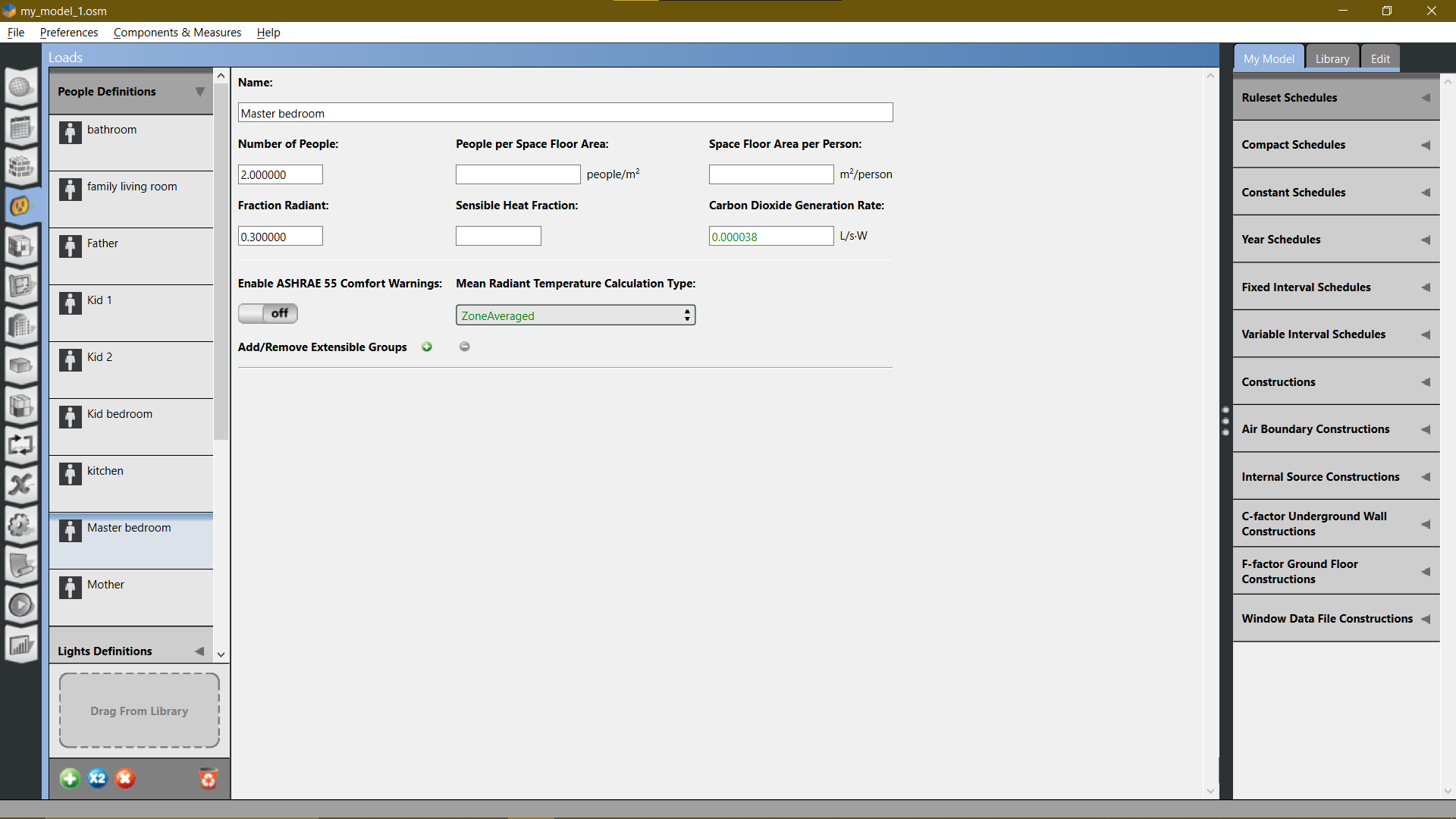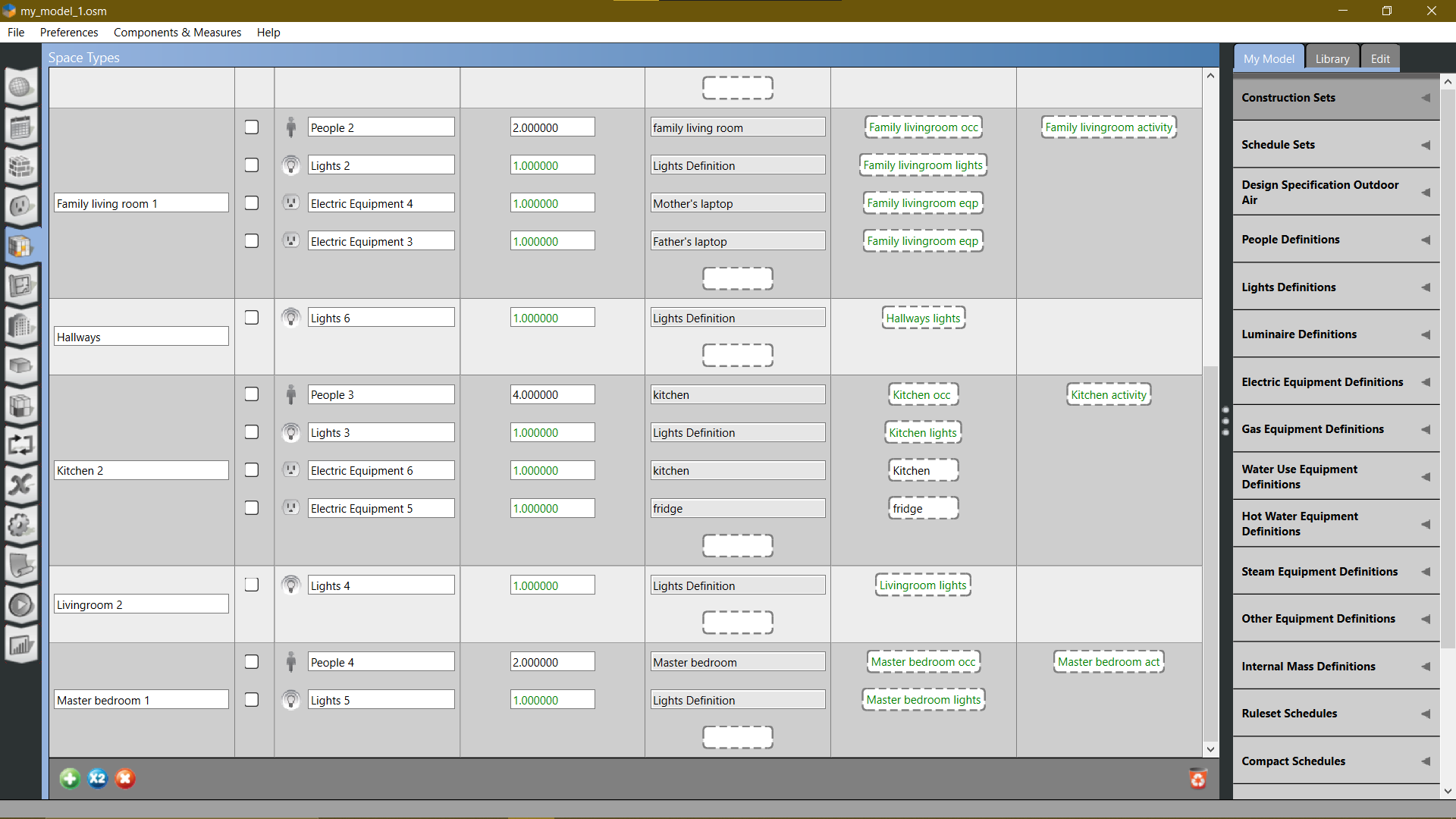Question about the relation between Number of people and multipliers
So in my model I want to have 4 "people", in the loads tab, in peoples definitions, when I create a people load I have a space named "Number of people", so for example I create a definition for the "master bedroom"
Now in the "Space types" tab, under the "Loads" sub-tab, should I set the multiplier on 2 or should I leave it on 1?





